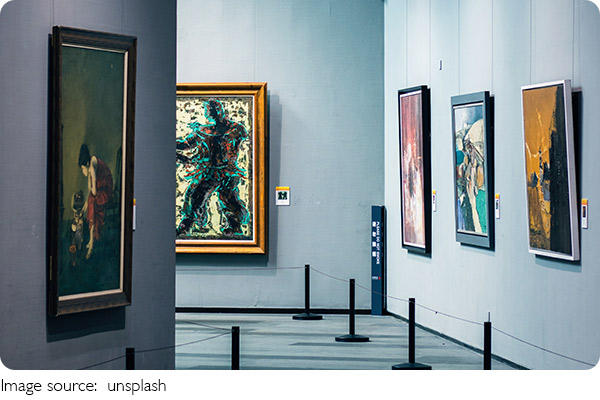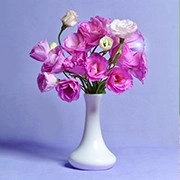The Power of Color

Color has been one of the most powerful tools in the hands of modern painters, allowing them to express emotions, challenge perceptions, and shape the viewer's experience.
In modern art, color is no longer just a means to depict the physical world but has evolved into a medium that carries deep, subjective meaning.
This article explores the transformative role of color in modern painting, how it conveys messages, and how it has revolutionized the way art is perceived in the contemporary world.
Color as a Reflection of Emotion
One of the primary roles color plays in modern painting is as an emotional conduit. Artists, from the post-impressionists to contemporary creators, have used color to evoke specific feelings in their audience.
For example, the warm tones of red, orange, and yellow might evoke a sense of energy, passion, or warmth, while cool blues and greens can bring about calmness, melancholy, or even detachment. The way colors are applied can amplify these emotions. Abstract artists like Mark Rothko masterfully used color fields to create an emotional atmosphere in their work. Rothko's use of large swaths of color is a direct attempt to make the viewer feel, not just observe.
This emotional connection through color allows for a more personal and immersive experience with the art. Viewers may interpret a piece in their own way, based on their personal emotional reactions to the colors used, giving the art a deeper, more individualized meaning.
Color as a Symbolic Language
Beyond emotions, color in modern painting is also used symbolically. Many artists employ color as a vehicle for conveying complex themes, ideas, and cultural or personal narratives. For instance, Pablo Picasso's "Guernica" uses stark contrasts between dark and light tones to evoke a sense of intensity and depth.
In this piece, the choice of black, white, and grey not only emphasizes the dramatic visual impact but also reflects the complexity and ambiguity of the subject matter, inviting viewers to interpret meaning in multiple ways.
Similarly, the work of German expressionist Ernst Ludwig Kirchner, known for the intense and clashing colors in his paintings, used these hues to convey inner emotions and the psychological depth of the human experience. In this sense, contemporary artists have embraced color as a storytelling tool, using it to express personal identity, emotions, and cultural concepts in a visually rich way.
The Evolution of Color Theory in Art
Modern painters' use of color is also heavily influenced by advancements in color theory. This field of study examines how colors interact with each other, and how they can be arranged to create certain visual effects.
Artists like Wassily Kandinsky, whose work is rooted in abstract expressionism, studied color theory extensively to produce works that felt not just visual, but also emotional. Kandinsky believed that colors were not only a visual phenomenon but could also influence the spiritual and psychological state of the viewer.
Color theory has allowed artists to break away from traditional practices, such as the need for realism and adherence to the laws of perspective. Now, colors are chosen for their interaction, their symbolism, and their ability to create a specific atmosphere. In this regard, the use of color in modern painting is a highly considered choice, not just a random selection or aesthetic preference.
Color in Abstraction and Non-representation
One of the most notable shifts in the use of color in modern art is the rise of abstraction. In non-representational art, color often becomes the subject of the artwork itself, as seen in the works of artists like Henri Matisse.
These artists discarded traditional representational approaches and instead used color as an autonomous element, focusing on its pure visual impact.
Color was inseparable from the rhythm and energy of his work. His splattered canvases are filled with intense, sometimes chaotic use of color that mimics the frenetic, organic movements of the body. His action painting technique emphasizes color's role in capturing movement and energy, while also leaving space for the viewer to bring their own interpretation to the piece.
Similarly, Matisse's use of color was revolutionary in its departure from naturalism. In his cut-out works, he used vibrant, bold colors not to represent the physical world, but to create an emotional, almost dreamlike space. His choice of color in pieces like "The Snail" is not merely a decorative aspect of the work but a driving force behind its composition and meaning.

The Role of Color in Perception and Memory
Another fascinating aspect of color's role in modern painting is its effect on perception and memory. Color influences how we perceive objects and spaces, and this psychological aspect of color has been exploited by many modern artists. Color has the power to alter our sense of space, depth, and even time.
Warm colors tend to advance, while cool colors recede, giving the illusion of three-dimensionality on a flat canvas. This ability to play with perception is seen in the works of artists such as Ellsworth Kelly, whose bold color blocks challenge the viewer's understanding of perspective and depth.
Furthermore, color in painting can evoke memories or associations, whether personal or cultural. Certain colors may remind a viewer of a particular moment in time, or even represent larger cultural symbols. For example, in the work of African American artist Jacob Lawrence, his use of red, yellow, and black tells a narrative of history, culture, and struggle, resonating with the African American experience.
Color and Cultural Influence
Finally, the role of color in modern painting is influenced by broader cultural contexts. Different cultures associate colors with different meanings, and modern painters have taken these associations into account when using color in their works.
For instance, in Western culture, red is often associated with love or danger, while in Eastern cultures, red signifies luck and prosperity. Artists today are aware of these cultural connotations and use them intentionally to evoke a specific response from their audience.
This cultural aspect of color in art has grown even more prominent in an increasingly globalized world, where artists from different cultural backgrounds can influence each other and bring new perspectives to their use of color.

 · Art team
· Art team